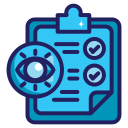Diagram Types That Tell the Right Story
A three-panel storyboard can show intent, interaction, and outcome without a single equation. Stakeholders empathize quickly, revealing assumptions. Pair each frame with a testable acceptance criterion. Share a storyboard example that made a contentious decision suddenly obvious to everyone.
Diagram Types That Tell the Right Story
Sequence diagrams expose latency, retries, and handshake failures. State diagrams clarify lifecycle rules that text blurs. Together, they eliminate conflicting interpretations. Post a tricky state transition you visualized, and how it changed your testing strategy and defect prevention.



